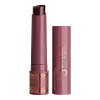What's inside
What's inside
 Key Ingredients
Key Ingredients

 Benefits
Benefits

 Concerns
Concerns

 Ingredients Side-by-side
Ingredients Side-by-side

Diisostearyl Malate
EmollientHydrogenated Polyisobutene
EmollientCaprylic/Capric Triglyceride
MaskingPolyglyceryl-2 Isostearate/Dimer Dilinoleate Copolymer
EmollientOctyldodecanol
EmollientSilica Dimethyl Silylate
EmollientSorbitan Isostearate
EmulsifyingSynthetic Wax
AbrasivePentylene Glycol
Skin ConditioningDisteardimonium Hectorite
StabilisingCaprylyl Glycol
EmollientSilica Silylate
EmollientCI 77891
Cosmetic ColorantTocopheryl Acetate
AntioxidantPropylene Carbonate
SolventCI 77499
Cosmetic ColorantCI 45410
Cosmetic ColorantCI 15850
Cosmetic ColorantParfum
MaskingCI 15985
Cosmetic ColorantDiisostearyl Malate, Hydrogenated Polyisobutene, Caprylic/Capric Triglyceride, Polyglyceryl-2 Isostearate/Dimer Dilinoleate Copolymer, Octyldodecanol, Silica Dimethyl Silylate, Sorbitan Isostearate, Synthetic Wax, Pentylene Glycol, Disteardimonium Hectorite, Caprylyl Glycol, Silica Silylate, CI 77891, Tocopheryl Acetate, Propylene Carbonate, CI 77499, CI 45410, CI 15850, Parfum, CI 15985
Diisostearyl Malate
EmollientPolybutene
Polyglyceryl-2 Triisostearate
EmulsifyingBis-Diglyceryl Polyacyladipate-2
EmollientCaprylic/Capric Triglyceride
MaskingMenthoxypropanediol
MaskingSynthetic Wax
AbrasiveMicrocrystalline Wax
Emulsion StabilisingStearalkonium Hectorite
Gel FormingParaffin
PerfumingTocopheryl Acetate
AntioxidantPropylene Carbonate
SolventEthylene/Propylene Copolymer
AbrasiveCaprylyl Glycol
EmollientPhenoxyethanol
PreservativeButyrospermum Parkii Butter
Skin ConditioningAroma
Hexylene Glycol
EmulsifyingPentaerythrityl Tetra-Di-T-Butyl Hydroxyhydrocinnamate
AntioxidantVanillyl Butyl Ether
MaskingCI 77499
Cosmetic ColorantCI 15850
Cosmetic ColorantCI 77491
Cosmetic ColorantCI 45410
Cosmetic ColorantDiisostearyl Malate, Polybutene, Polyglyceryl-2 Triisostearate, Bis-Diglyceryl Polyacyladipate-2, Caprylic/Capric Triglyceride, Menthoxypropanediol, Synthetic Wax, Microcrystalline Wax, Stearalkonium Hectorite, Paraffin, Tocopheryl Acetate, Propylene Carbonate, Ethylene/Propylene Copolymer, Caprylyl Glycol, Phenoxyethanol, Butyrospermum Parkii Butter, Aroma, Hexylene Glycol, Pentaerythrityl Tetra-Di-T-Butyl Hydroxyhydrocinnamate, Vanillyl Butyl Ether, CI 77499, CI 15850, CI 77491, CI 45410
Ingredients Explained
These ingredients are found in both products.
Ingredients higher up in an ingredient list are typically present in a larger amount.
This ingredient is an emollient, solvent, and texture enhancer. It is considered a skin-softener by helping the skin prevent moisture loss.
It helps thicken a product's formula and makes it easier to spread by dissolving clumping compounds.
Caprylic Triglyceride is made by combining glycerin with coconut oil, forming a clear liquid.
While there is an assumption Caprylic Triglyceride can clog pores due to it being derived from coconut oil, there is no research supporting this.
Learn more about Caprylic/Capric TriglycerideCaprylyl Glycol is a humectant and emollient, meaning it attracts and preserves moisture.
It is a common ingredient in many products, especially those designed to hydrate skin. The primary benefits are retaining moisture, skin softening, and promoting a healthy skin barrier.
Though Caprylyl Glycol is an alcohol derived from fatty acids, it is not the kind that can dry out skin.
This ingredient is also used as a preservative to extend the life of products. It has slight antimicrobial properties.
Learn more about Caprylyl GlycolCi 15850 is the pigment color red. It is an azo dye and created synthetically.
Azo dyes need to be thoroughly purified before use. This allows them to be more stable and longer-lasting.
This ingredient is common in foundations, lipsticks, and blushes. This color is described as brown/orangey red.
It has many secondary names such as Red 6 and Red 7. According to a manufacturer, Red 6 usually contains aluminum.
Learn more about CI 15850CI 45410 is a synthetic red-pigment and dye.
It often goes by both Red 28 or Red 27; manufacturers label both ingredients as CI 45410.
This dye is commonly found in makeup because it imparts a vivid color. Some types of this dye change color based on pH level and interaction with moisture:
Your skin has a natural pH of around 4.5 - 5.5.
According to the FDA, CI 45410 is not permitted for use in eye products.
Red 27 is a flourescein dye and commonly used as a fluorescent tracer in medicine.
Learn more about CI 45410Ci 77499 is also hydrated iron III oxide. It is created from mixing red and black iron oxides. This helps give shades of darkness to a product.
Iron III oxides are classified as inorganic chemicals for coloring.
Diisostearyl Malate is an emollient and most often used in lip products. It comes from isostearyl alcohol, a fatty acid, and malic acid, an AHA.
As an emollient, Diisostearyl Malate helps create a thin film on your skin to trap moisture in. This helps keep your skin soft and smooth.
This ingredient is a solvent. It helps dissolve active ingredients and alter the texture of products.
Propylene Carbonate is commonly used in makeup and with clay, such as montmorillonite or bentonite.
Studies show this ingredient to be safe for cosmetics. When it is undiluted, it can cause skin irritation. (It is always diluted in skincare and makeup). This ingredient is water-soluble.
Propylene Carbonate is created from propylene glycol and carbonic acid.
Learn more about Propylene CarbonateSynthetic Wax is created from fossil fuels such as natural gas. It is used to enhance texture, adjust pH, and as an occlusive.
It may also be used as an abrasive ingredient to exfoliate the skin.
Synthetic Wax may not be fungal acne safe.
Learn more about Synthetic WaxTocopheryl Acetate is AKA Vitamin E. It is an antioxidant and protects your skin from free radicals. Free radicals damage the skin by breaking down collagen.
One study found using Tocopheryl Acetate with Vitamin C decreased the number of sunburned cells.
Tocopheryl Acetate is commonly found in both skincare and dietary supplements.
Learn more about Tocopheryl Acetate